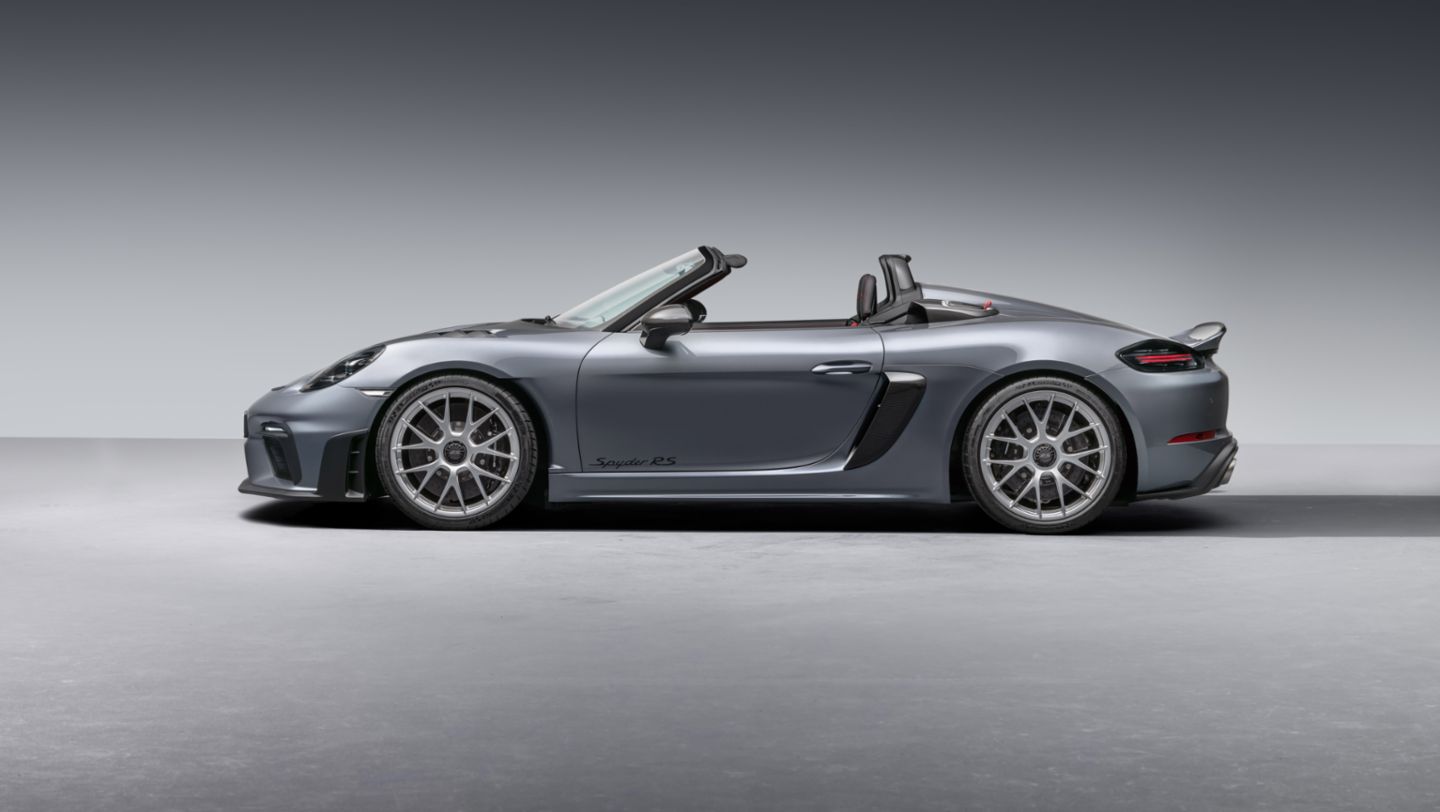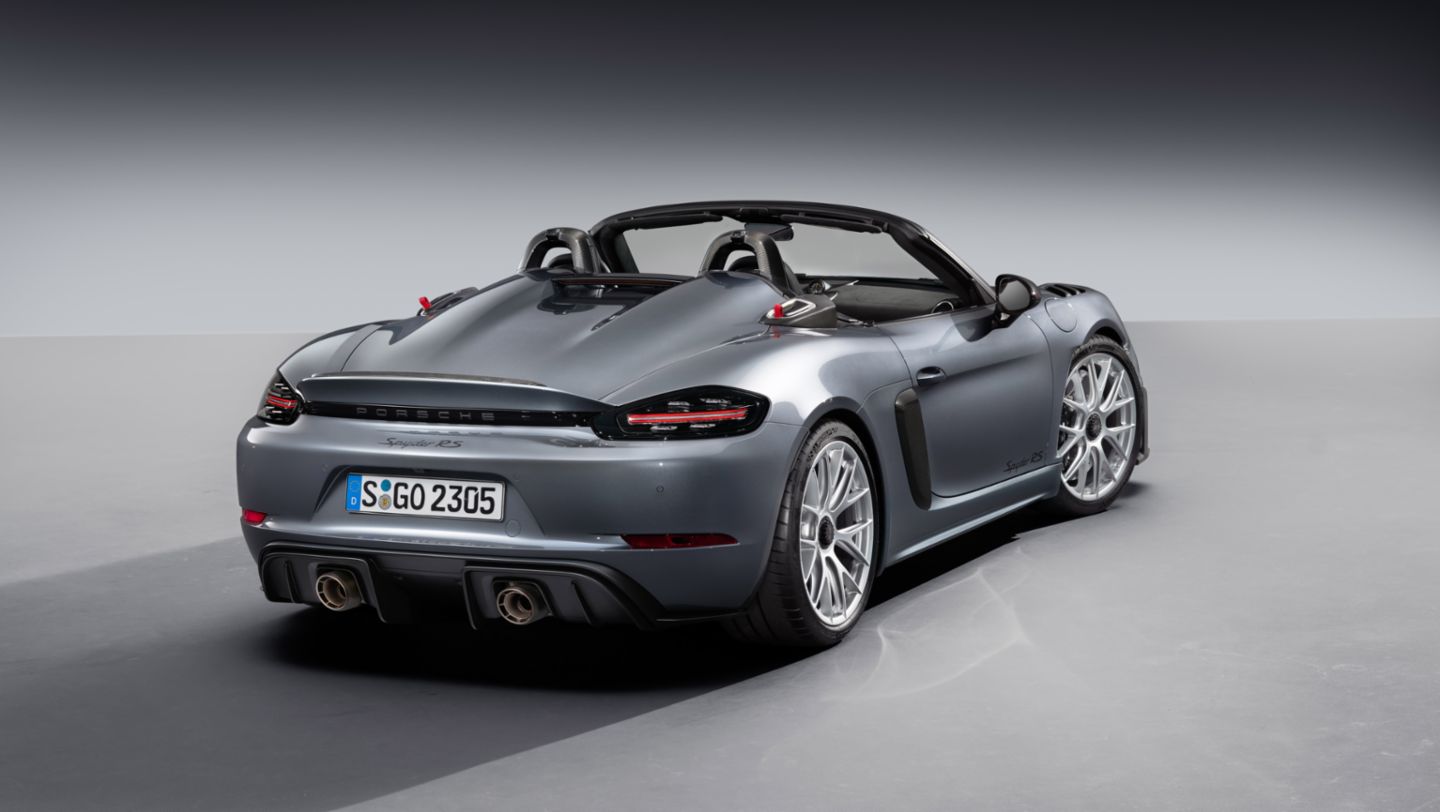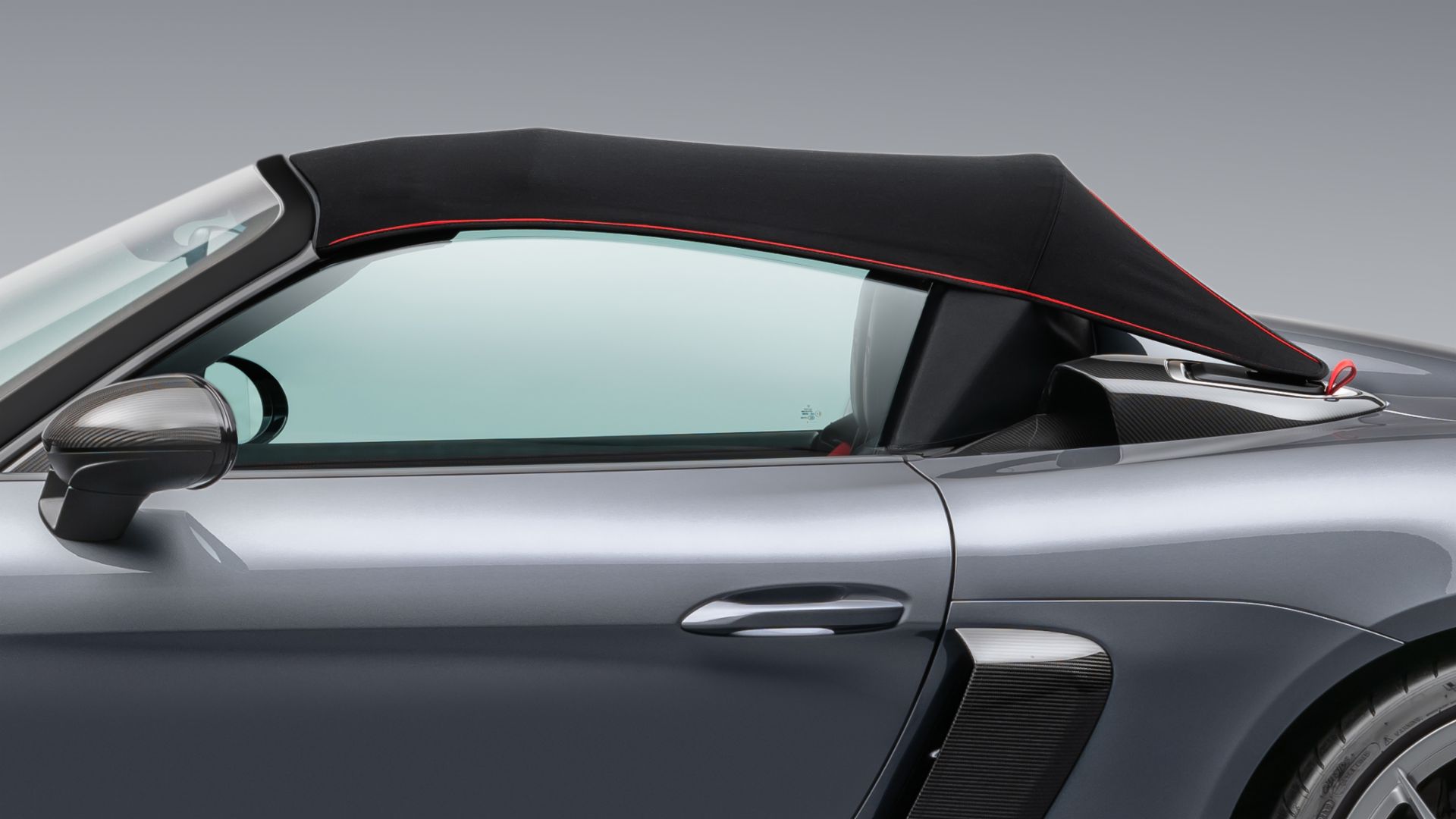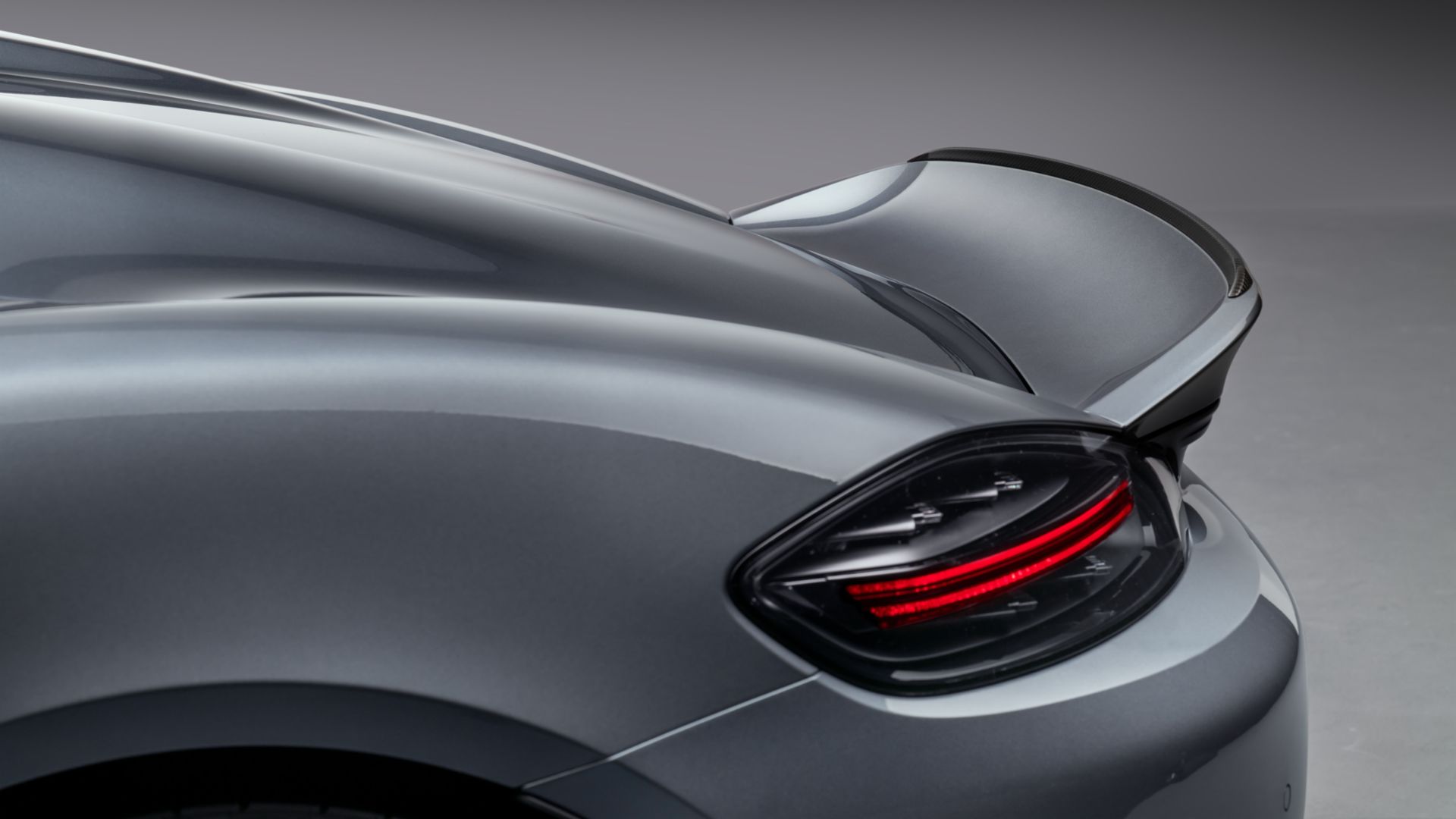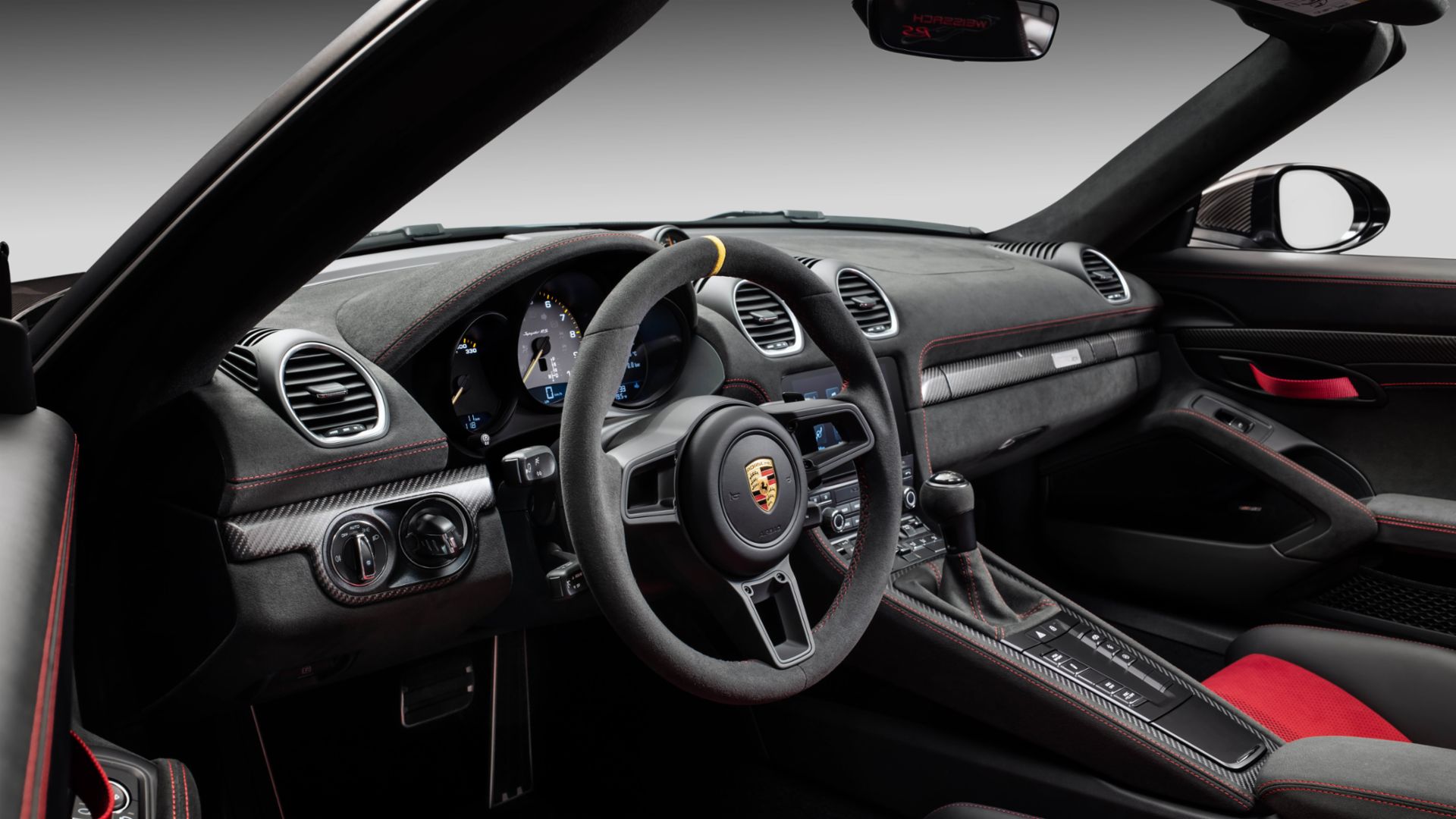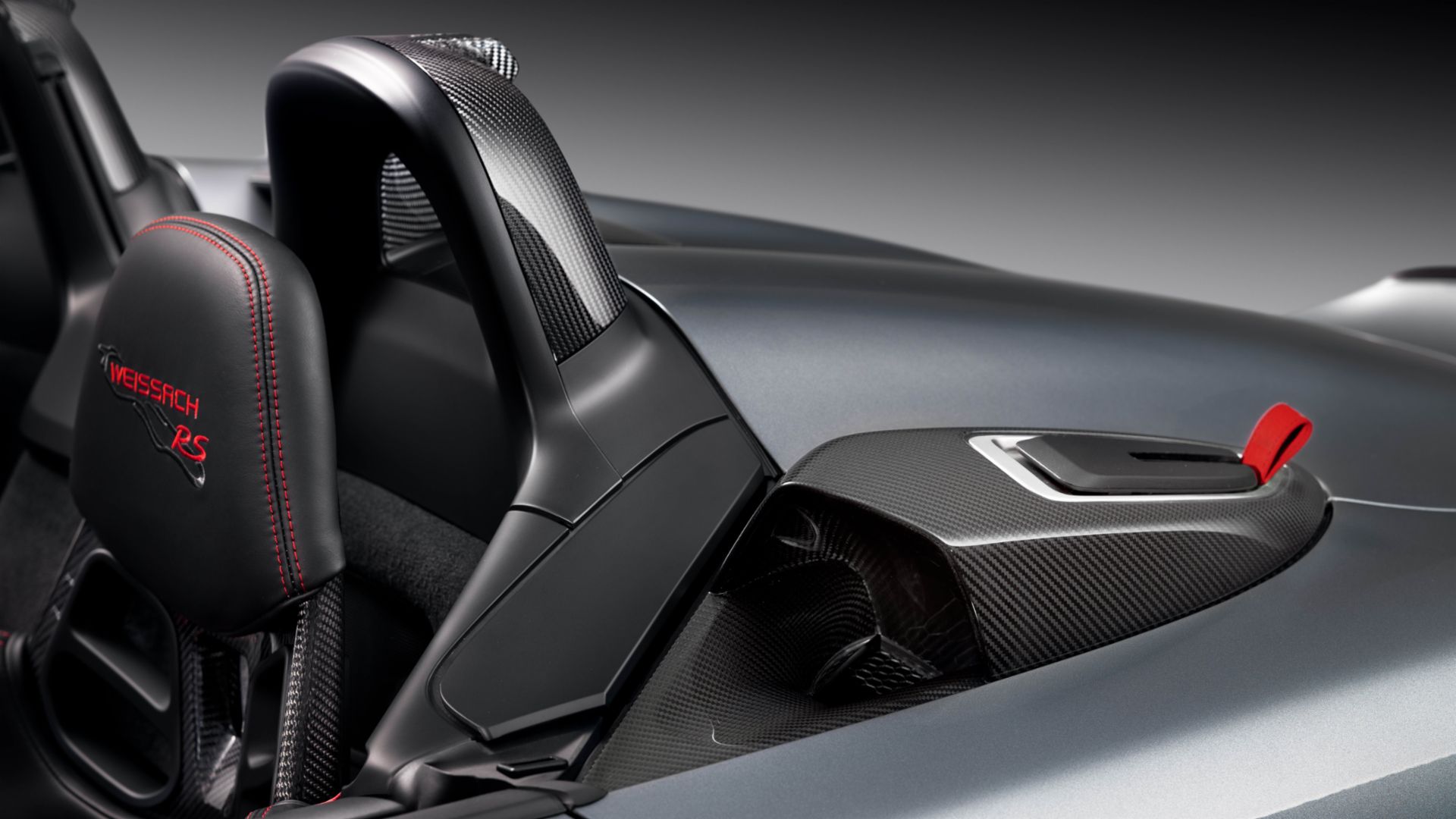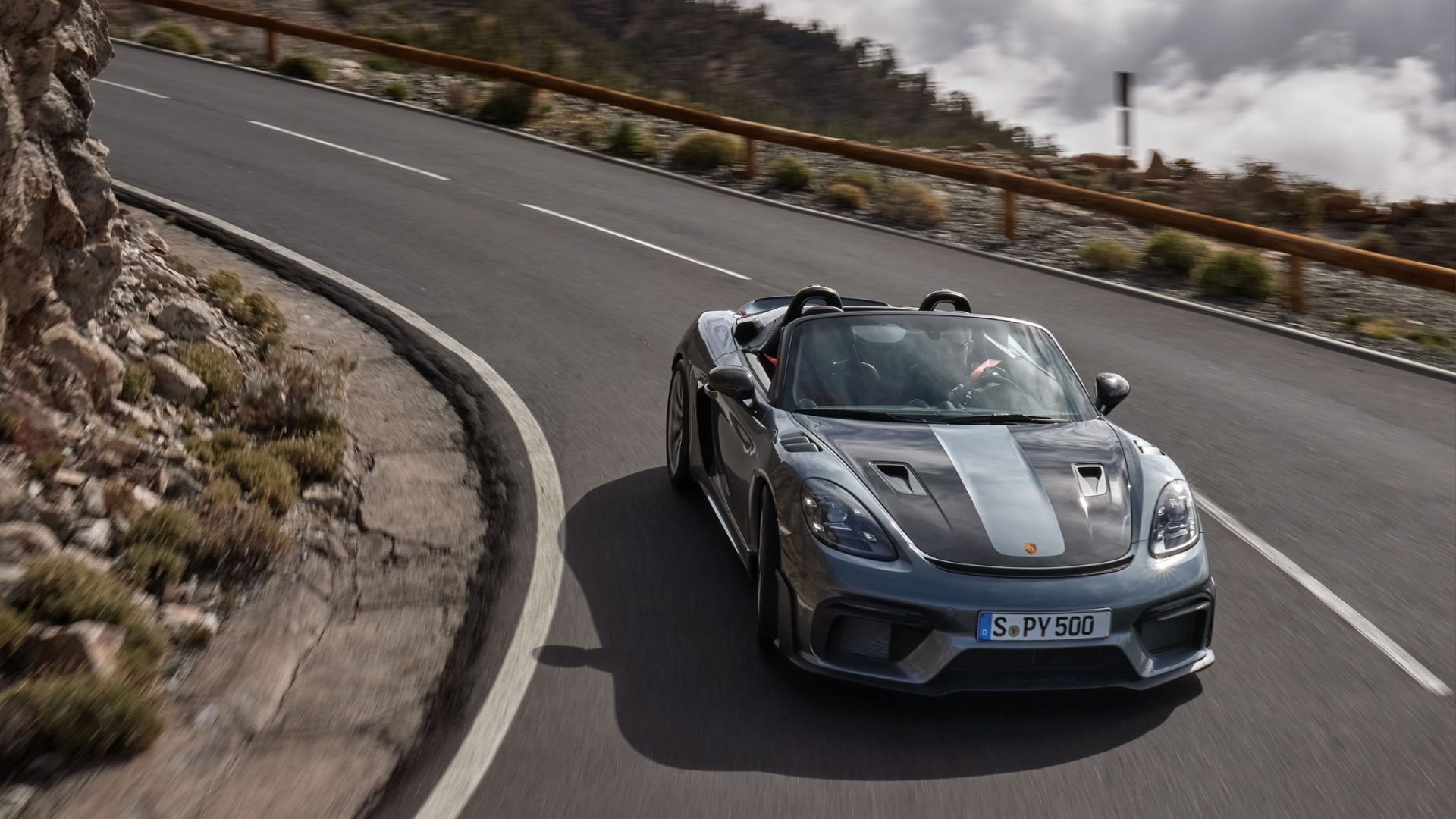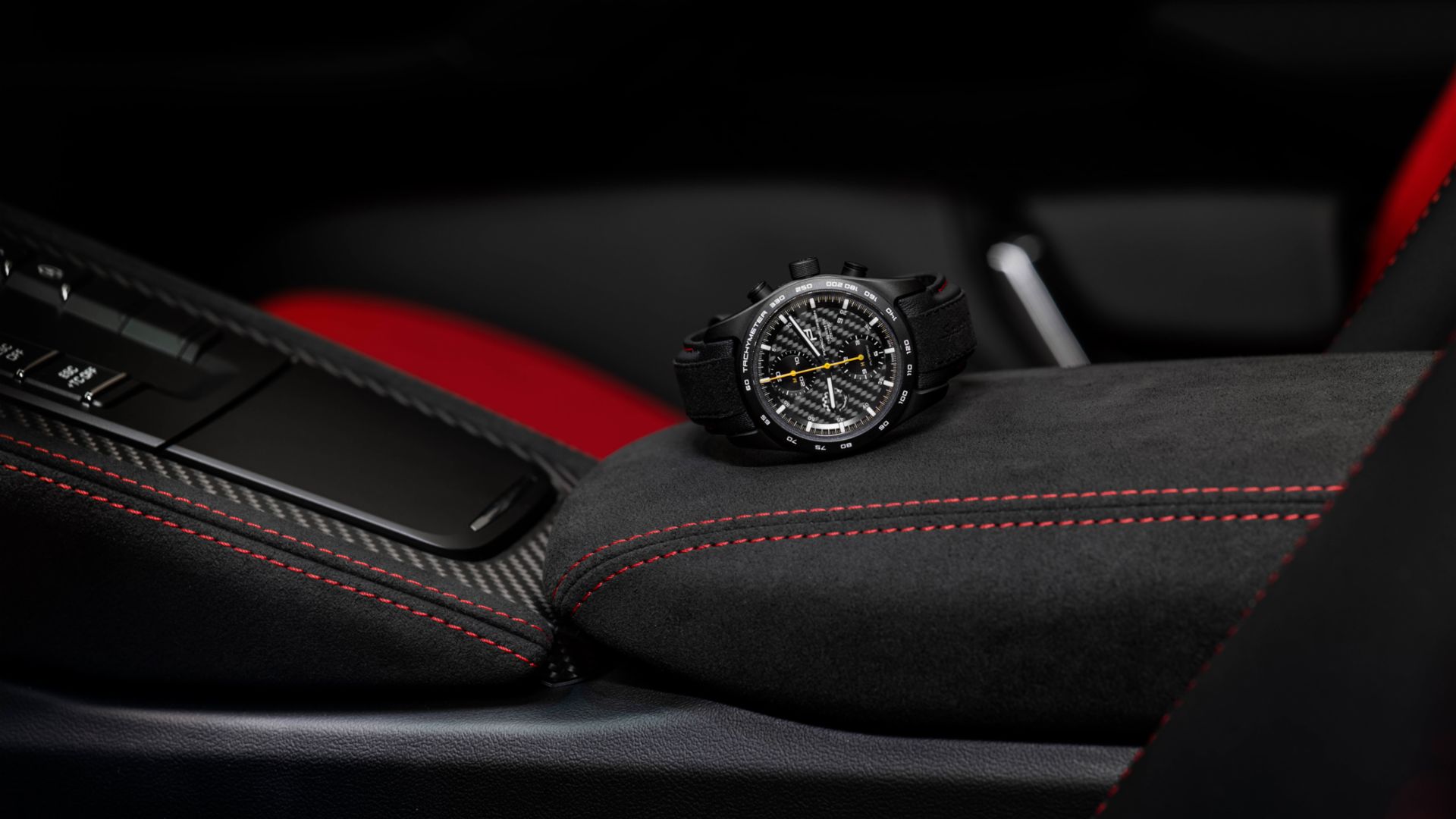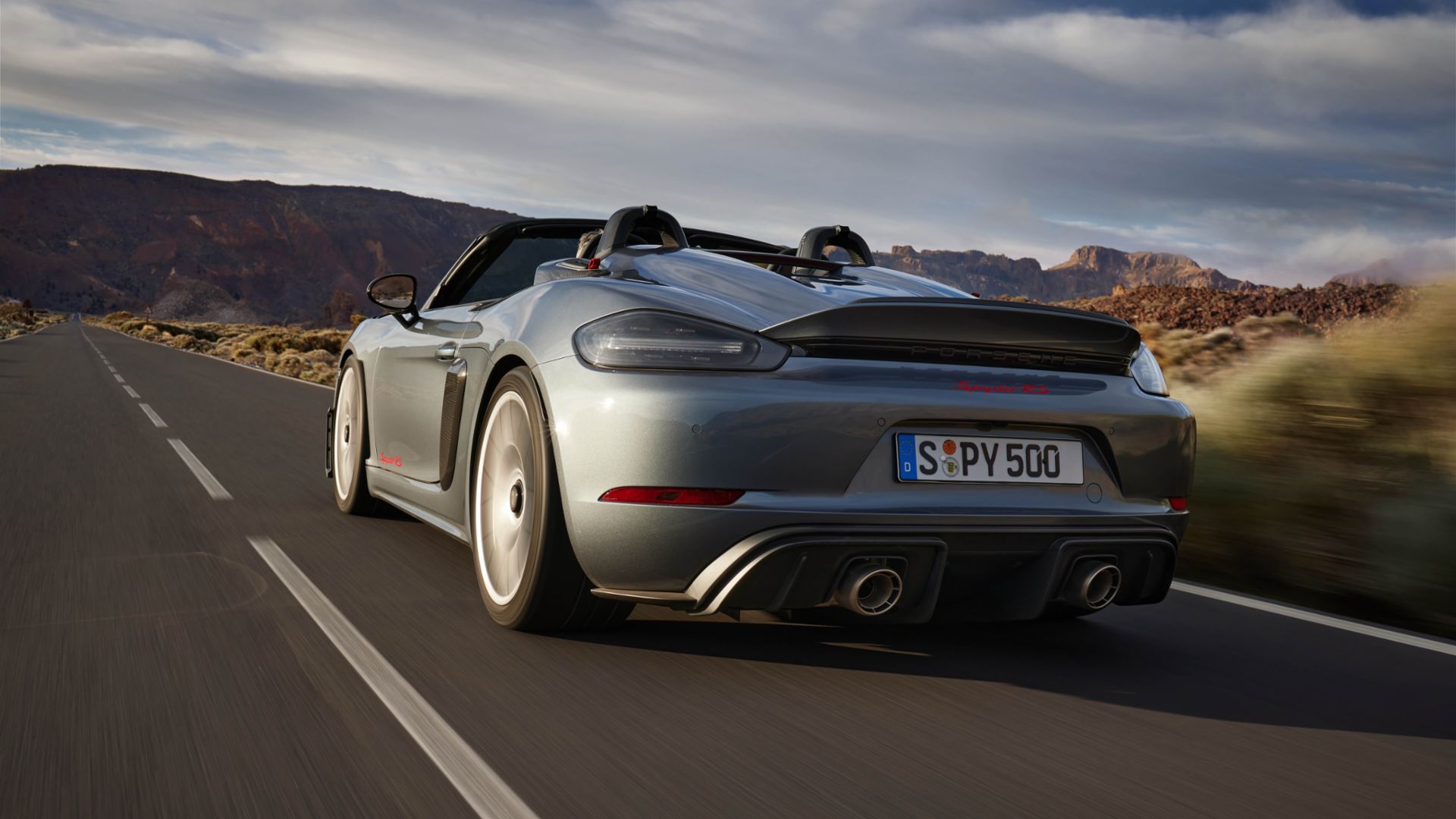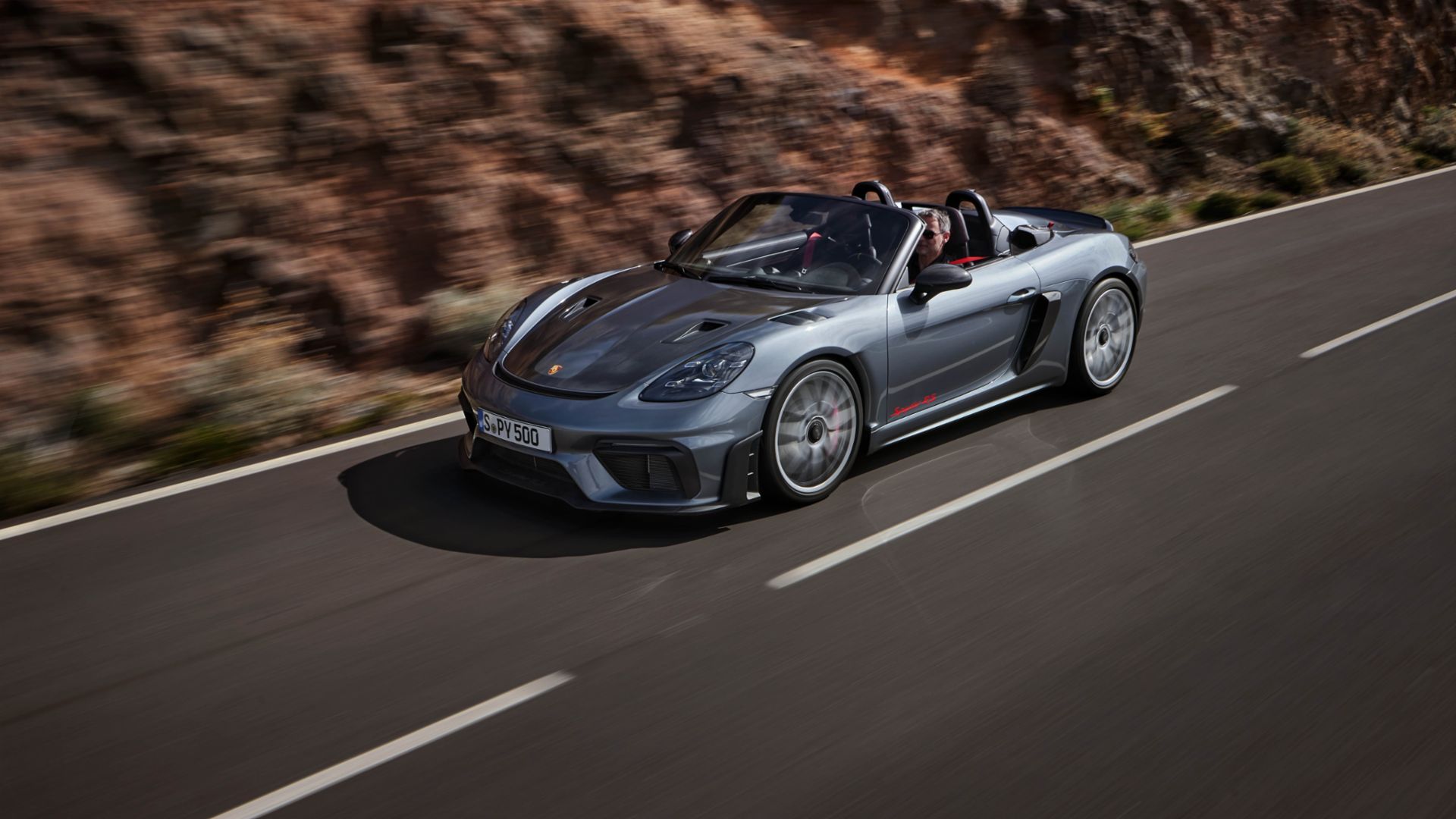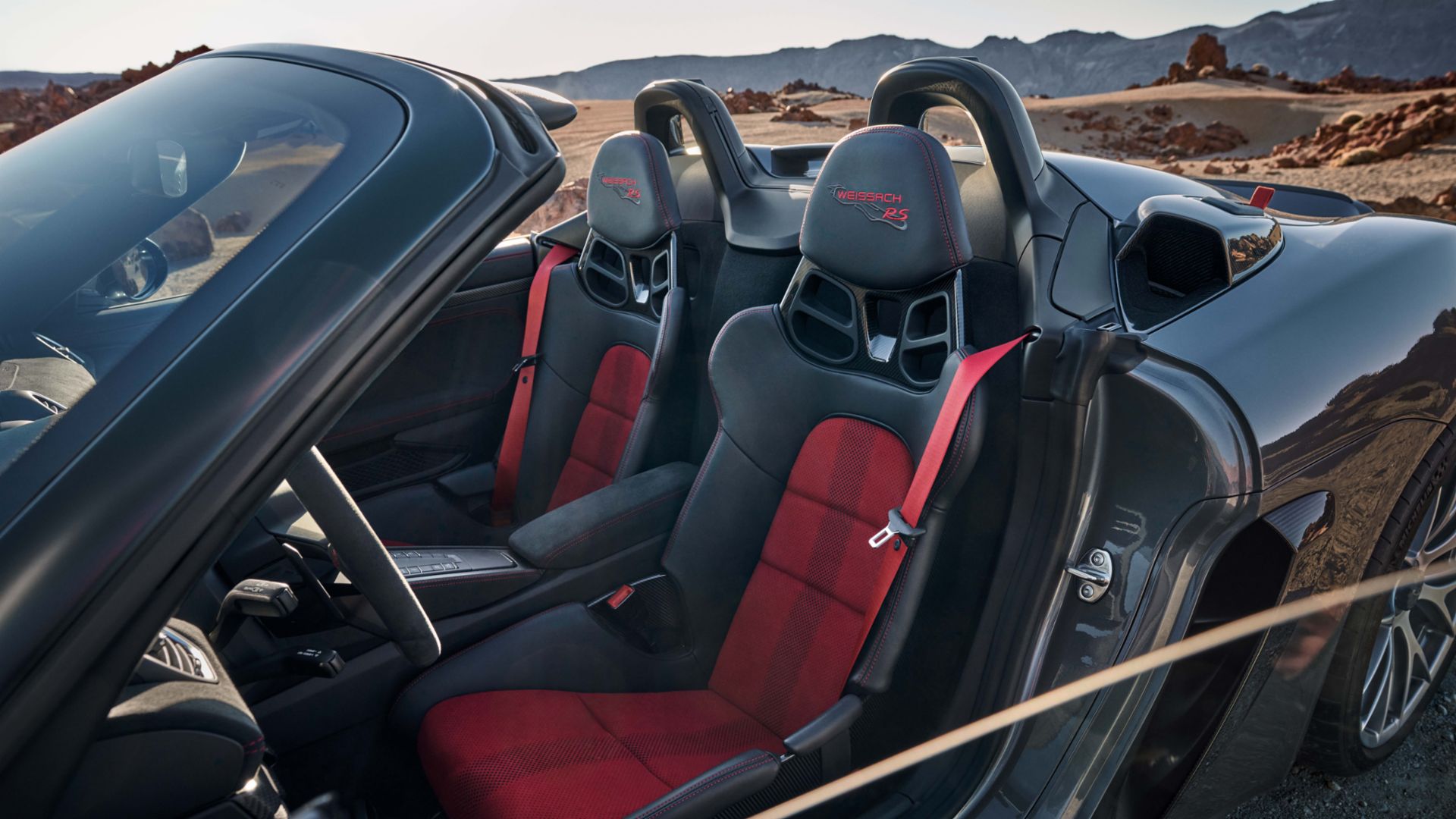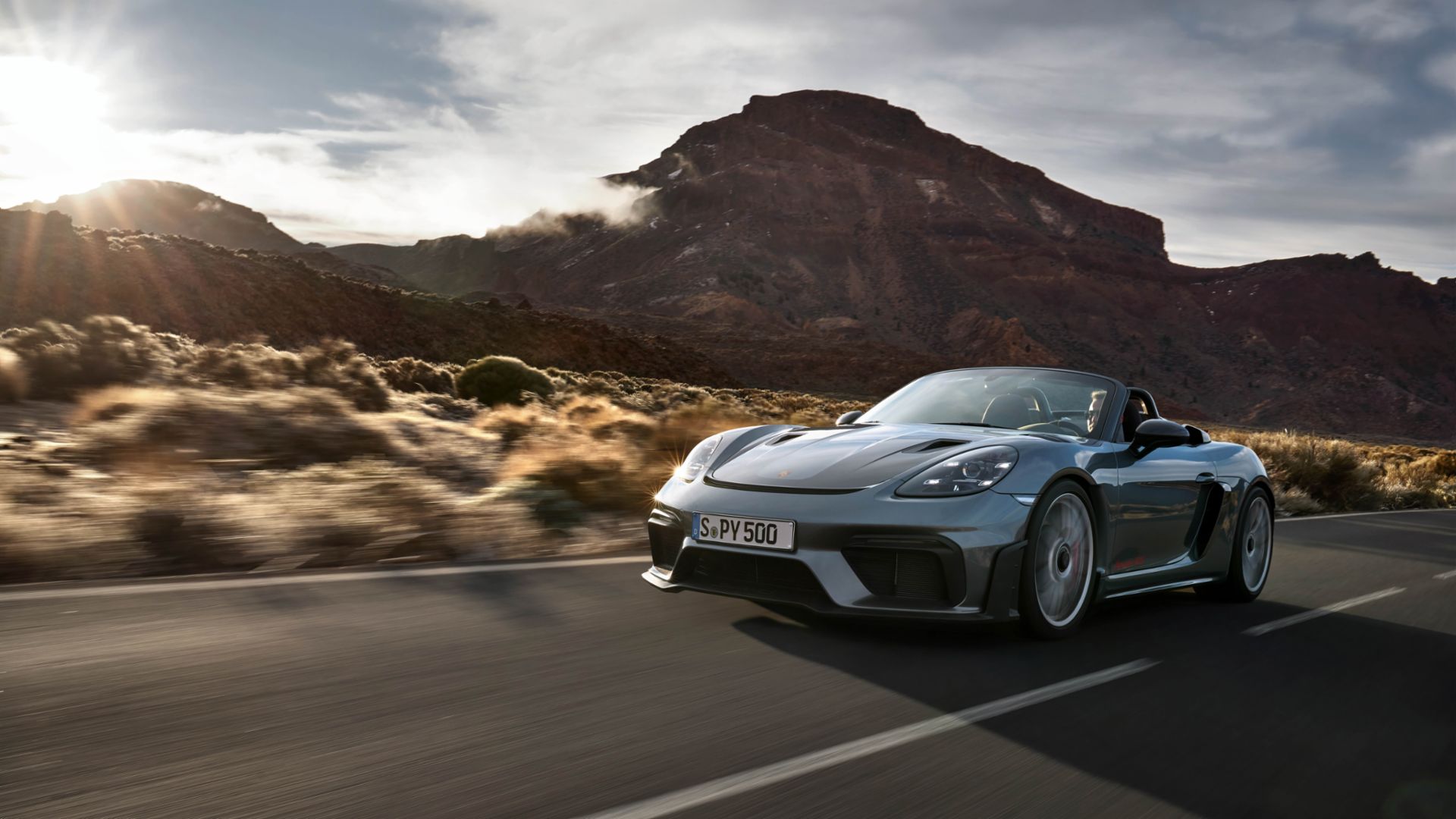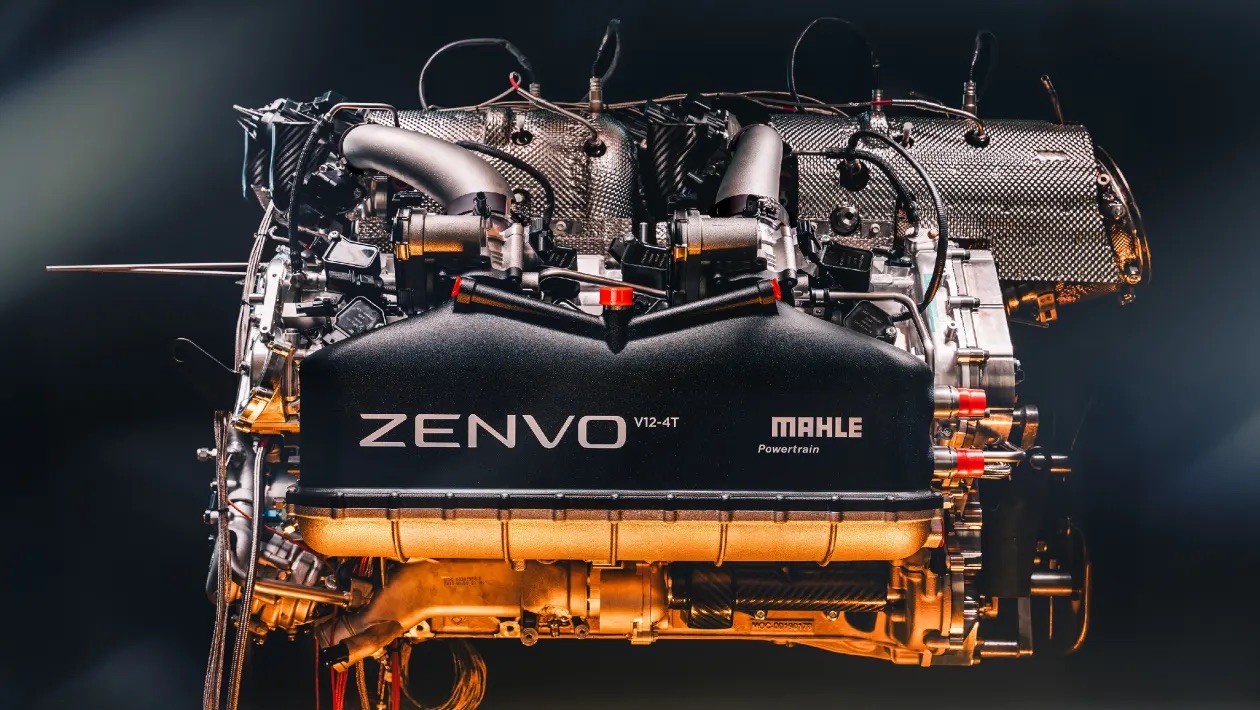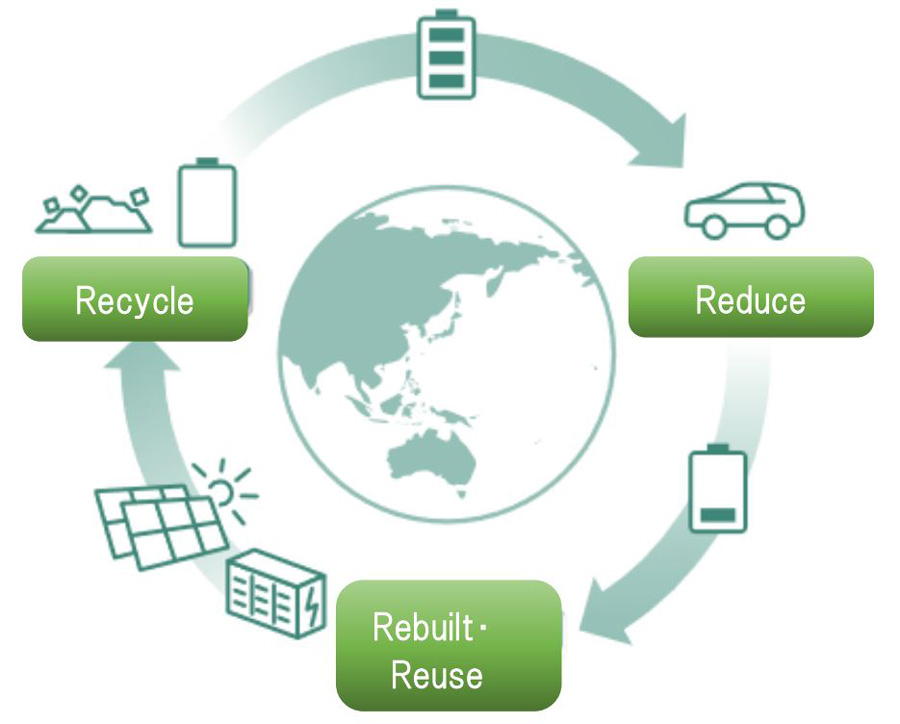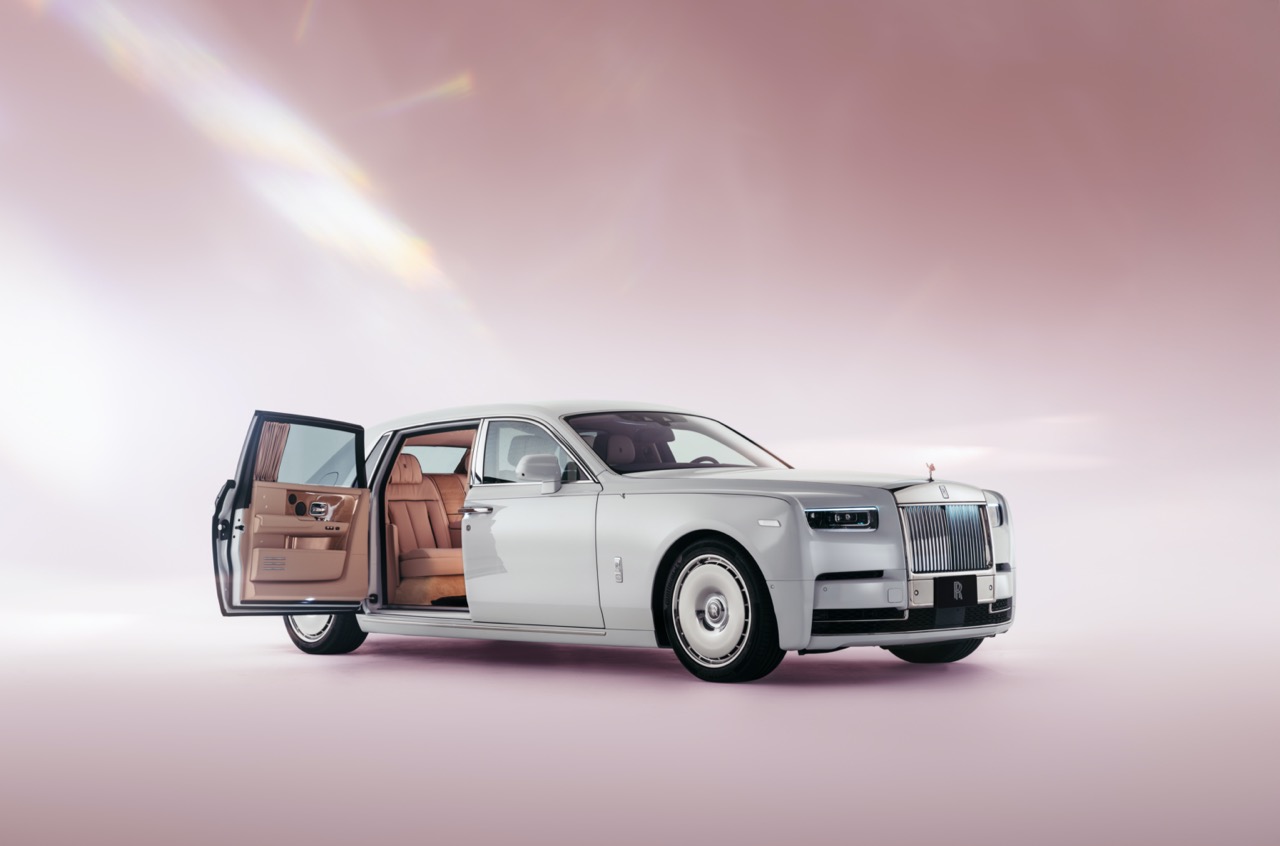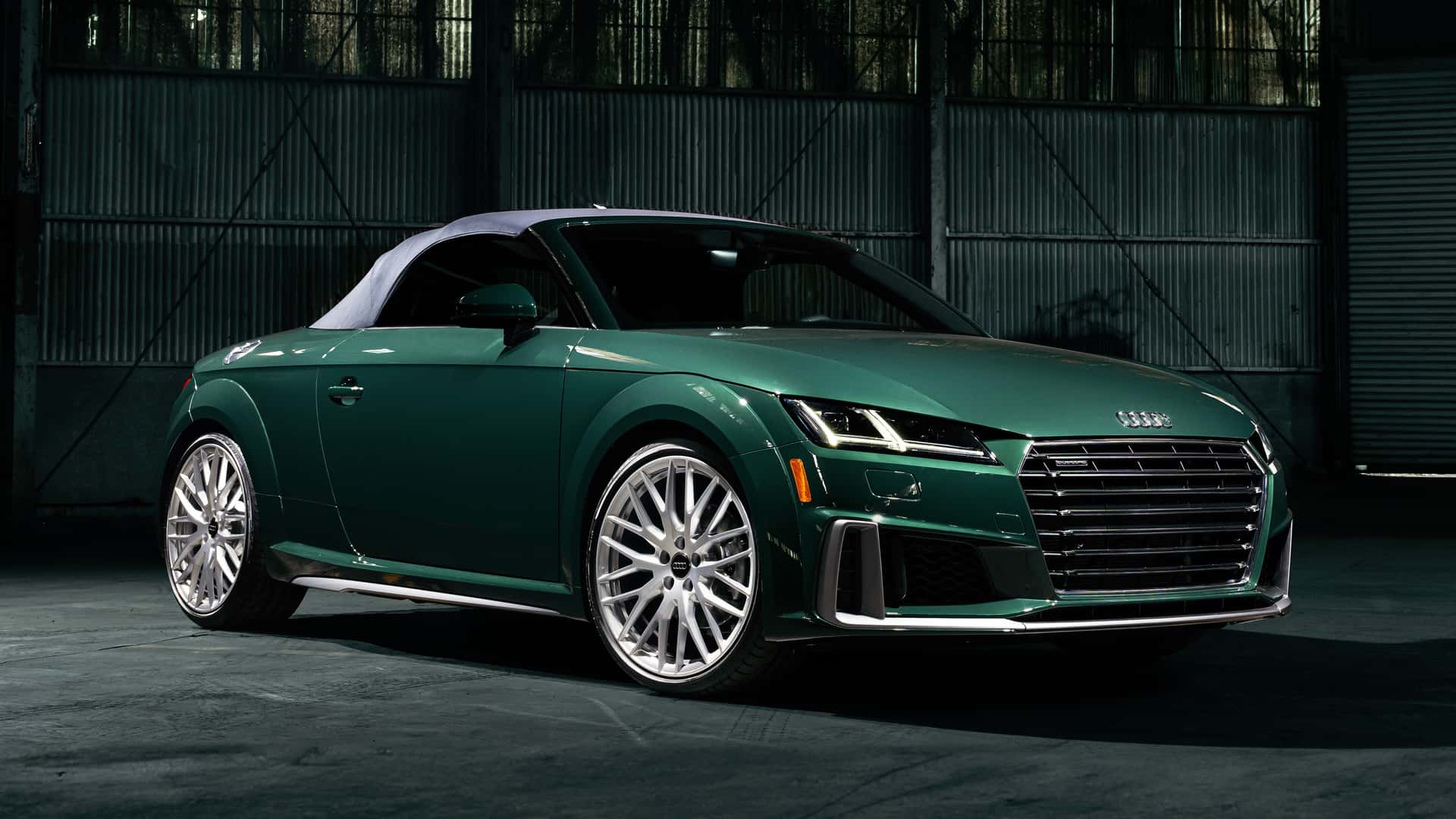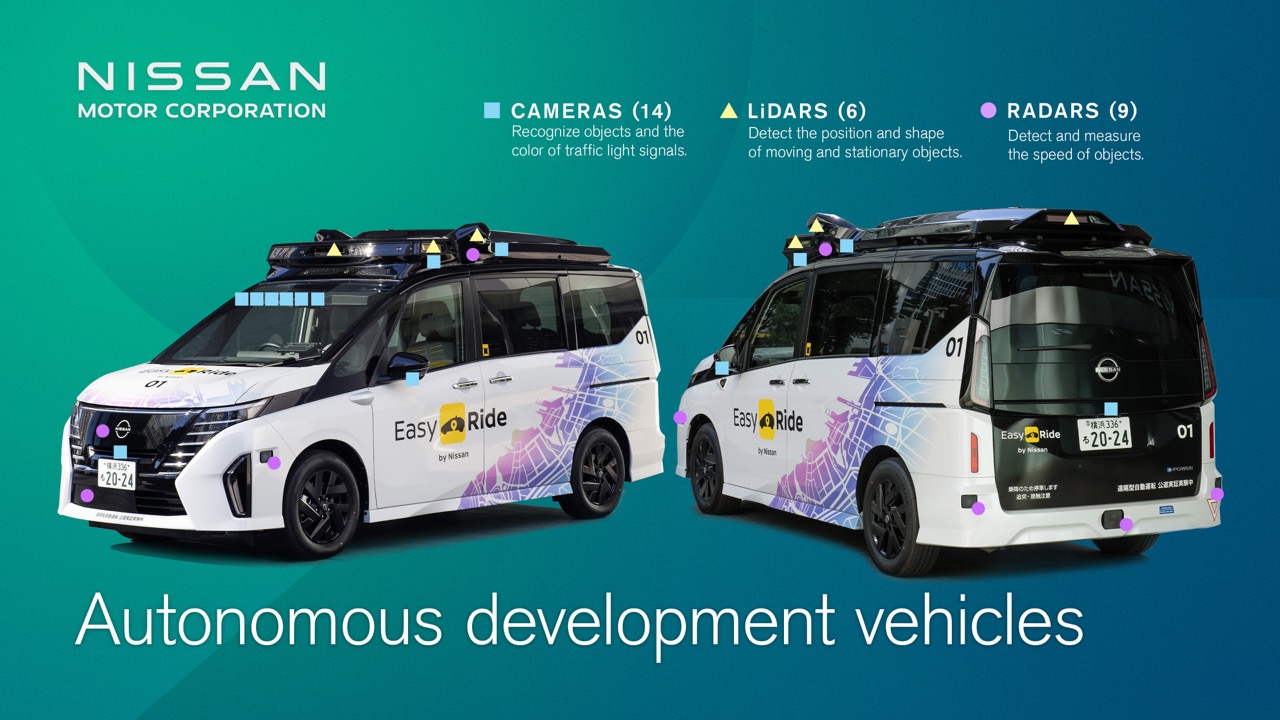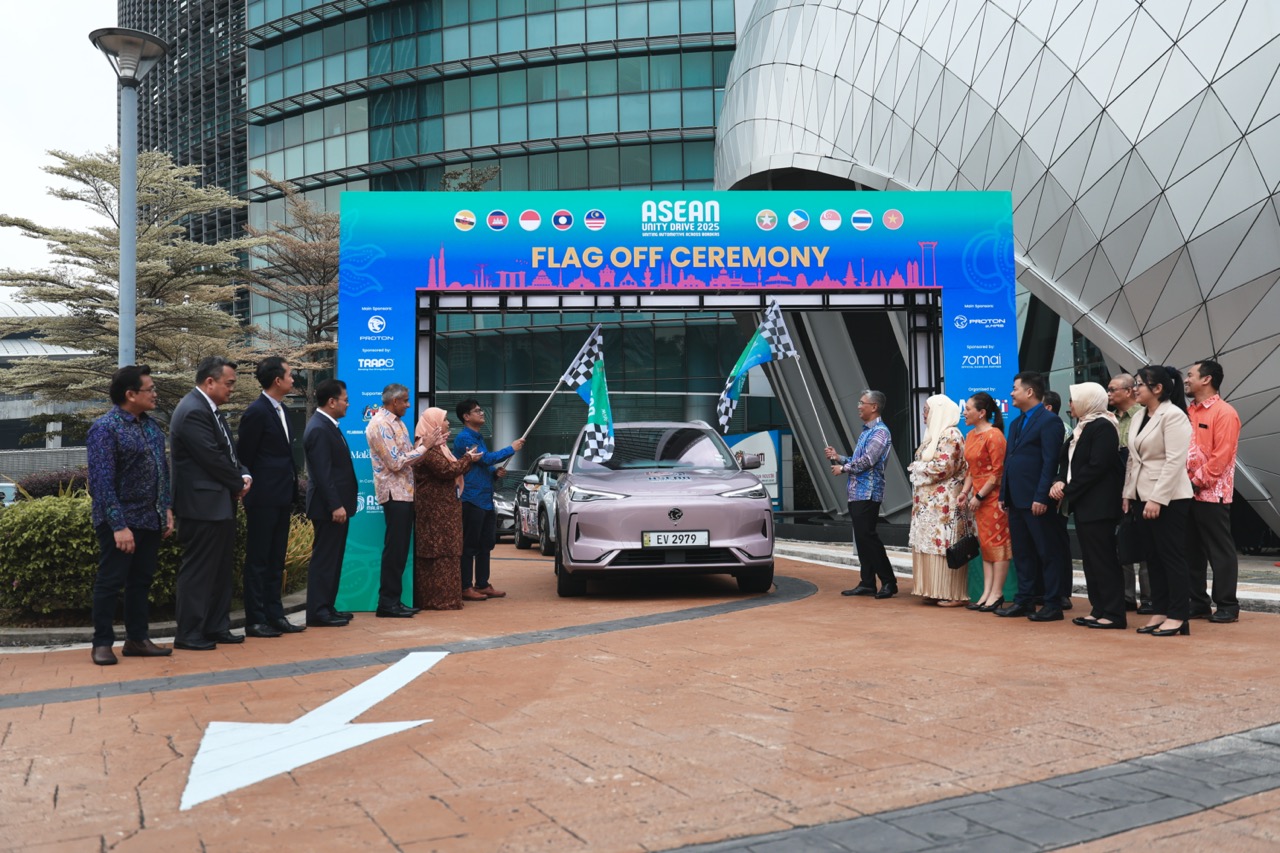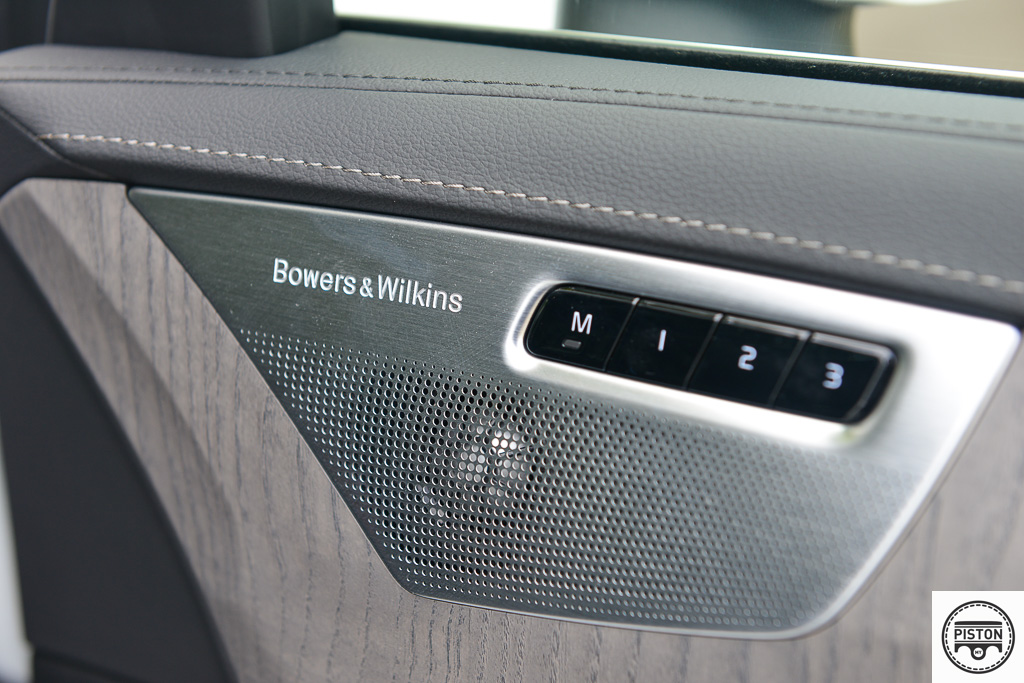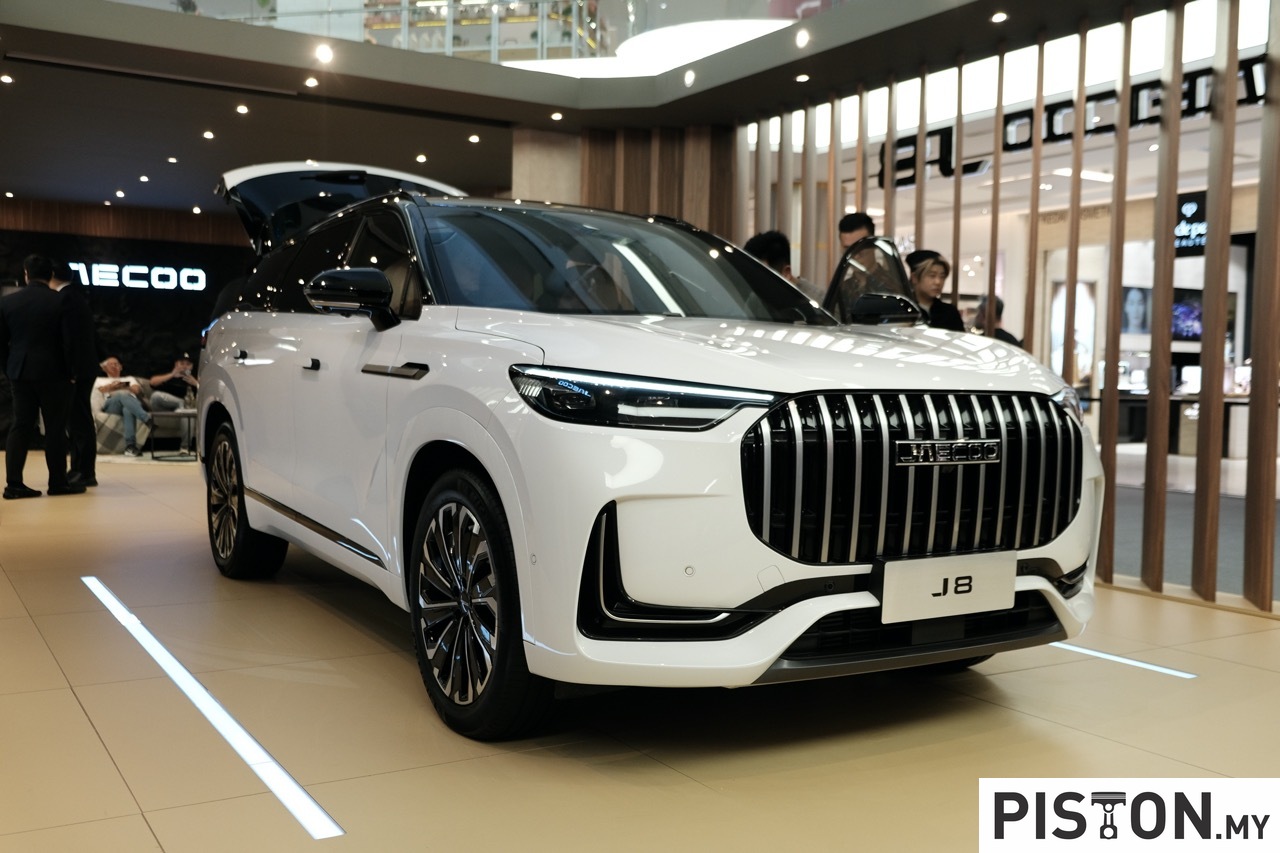Porsche is releasing the most potent iteration of the well-known mid-engined roadster yet: the new Porsche 718 Spyder RS, thirty years after the Boxster concept vehicle was unveiled. The high-revving, naturally aspirated 911 GT3 engine is being used in an open-topped, mid-engined sports car for the first time. The 718 Spyder RS is the 718 Cayman GT4 RS‘s open-top sibling.
Exterior
The new Porsche 718 Spyder RS and 718 Cayman GT4 RS both have very identical front ends. The front bonnet that comes standard is composed of CFRP (carbon fibre-reinforced plastic) and has a sizable air exit above the bumper. The Cd (drag coefficient) value is unaffected while the two NACA vents improve brake cooling.
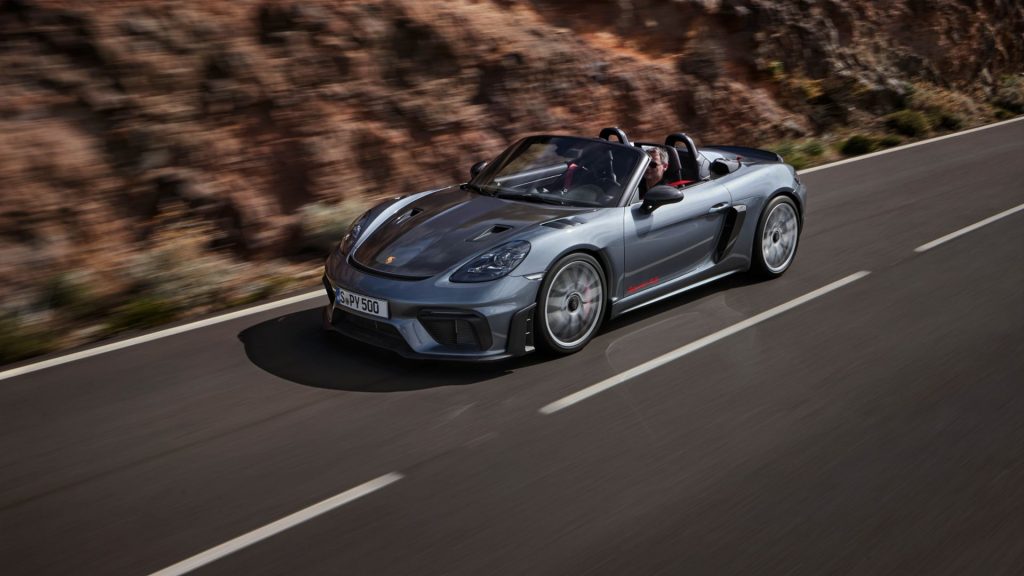
The bumper’s side-blades at the ends increase downforce. Because the 718 Cayman GT4 RS’s huge rear wing and slightly shorter front spoiler lip produce more total downforce on the Cayman, a larger front spoiler lip is needed to establish aerodynamic balance. The 718 Spyder RS has a stunning tear-off edge resembling a ducktail in place of a wing. According to Porsche, every element of aerodynamics is carefully coordinated. They guarantee maximum driving stability at high speeds while preserving the car’s aerodynamic balance.
A single-layer, lightweight soft-top that is manually controlled is included with the Porsche 718 Spyder RS. Amazingly simple, the design just has two components:
- a weather deflector
- a sun sail.
Both can be stored in the car either together or separately and are entirely detachable. The driver and front passenger can be shielded from the sun’s glare by using the sun sail alone as a “Bimini top.” The passenger compartment in this instance is still largely open to the side and behind the occupants.
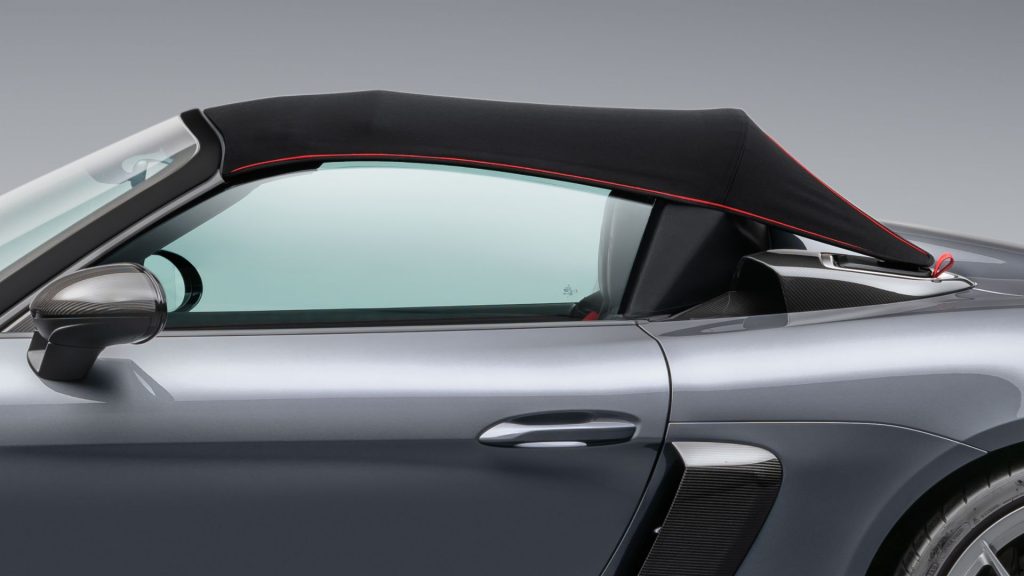
When the side windows are lifted, this forms a complete top with the weather deflector that effectively protects against rain. The roof’s total weight, including the mechanical components, is only 18.3 kg. That is 16.5 kg and 7.6 kg less than the 718 Boxster and Spyder, respectively. Weather permitting, drivers who want to remove an additional eight kilogrammes from the vehicle’s weight can drive without using the top at all.
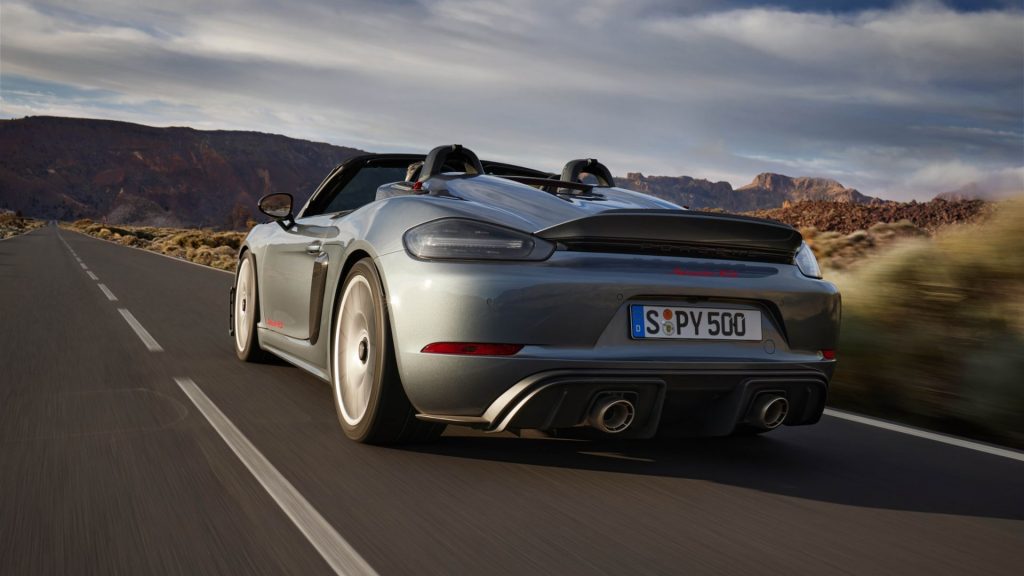
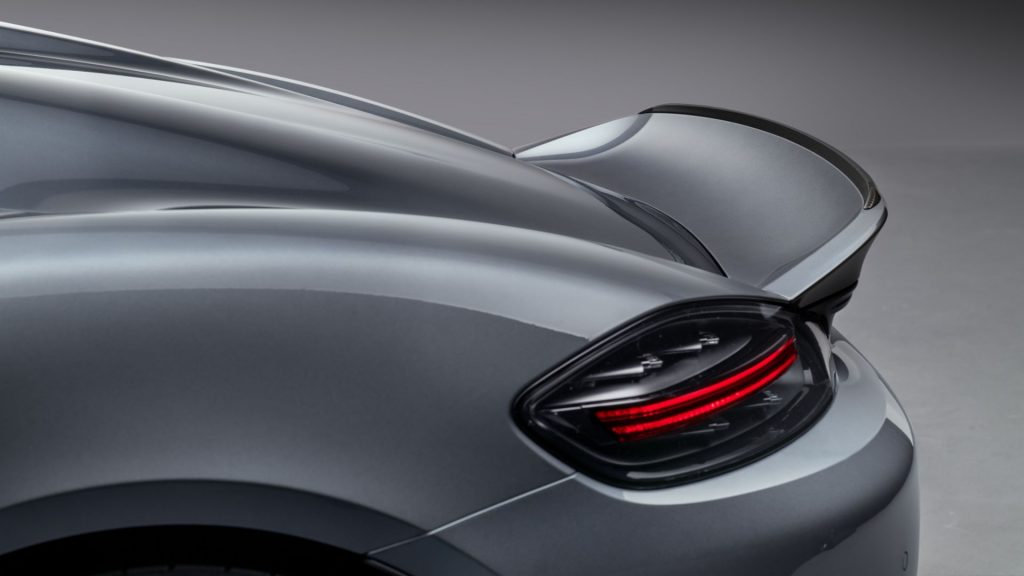
Powertrain and Suspension
The new 718 Spyder RS shares an identical powertrain as the 718 Cayman GT4 RS coupe. The 4.0 litre, six-cylinder boxer engine can rev up to 9,000 rpm, producing a maximum torque of 450 Newton metres and an output of 500 PS. The six-cylinder engine propels the two-seat roadster from 0 to 100 km/h in 3.4 seconds when coupled with a short-ratio seven-speed PDK gearbox. In just 10.9 seconds, the sports car reaches 200 km/h, figures never heard before in a Boxster. The new range-topper has 80 PS more than the 718 Spyder without the ‘RS’ moniker, and it also accelerates to 100 km/h in half a second less time. Instead of 300 km/h, the top speed is now 308 km/h.
The new 718 Spyder RS is only offered with the Porsche dual clutch gearbox (PDK), just like every other contemporary RS model. This gearbox ensures optimal performance while accelerating through each of its seven ratios. Even when manually shifting gears, drivers are able to keep their hands on the wheel thanks to the aluminium steering mounted gear shifters. An ergonomic selector lever on the centre console is another option available to the driver. Along with having a more potent engine, the new model performs better because it is lighter. The Spyder RS weighs 1,410 kilogrammes, which is five kilogrammes less than the closed 718 Cayman GT4 RS and 40 kilogrammes less than the 718 Spyder with PDK.
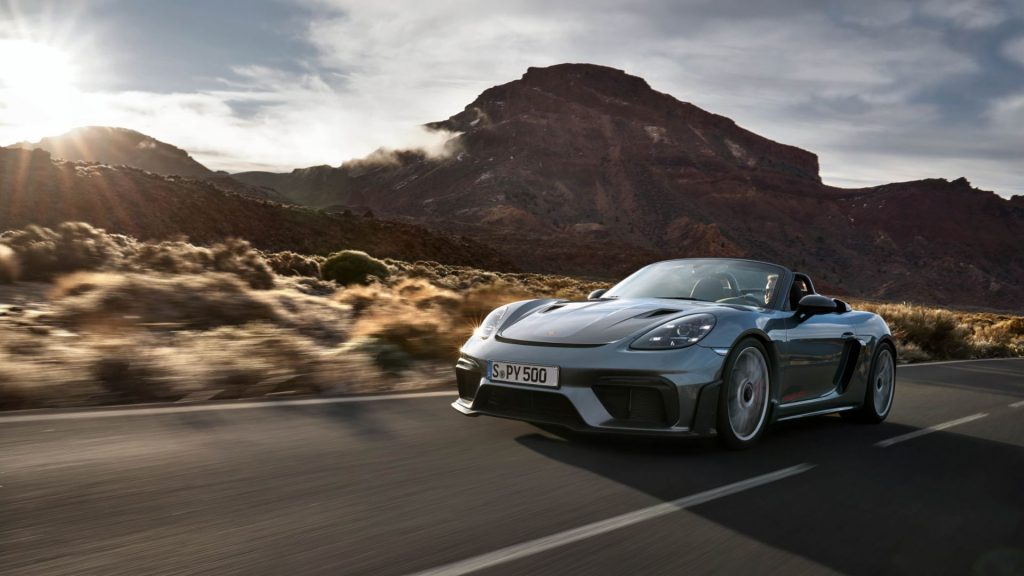
The 718 Spyder RS’s chassis, which was created to provide the most enjoyable driving experience possible on winding roads, incorporates parts from both the 718 Cayman GT4 RS and the 718 Spyder. It has been lowered by 30 mm and comes standard with Porsche Active Suspension Management (PASM) with sports tune. A mechanical limited-slip differential, ball-jointed suspension bearings, and 20-inch forged aluminium wheels are additional characteristics of Porsche Torque Vectoring (PTV).

The attitude of the chassis is typified by exceptionally neutral handling, quick steering, and razor-sharp steering precision. Each of the constituent components—ride height, camber, track, and anti-roll bar—can be modified. To achieve a more laid-back, typically convertible-style setup, spring and damper rates have been decreased as compared to the 718 Cayman GT4 RS.
Interior
The inside of the car has a sporty vibe because only the functional and ergonomic necessities remain. The yellow 12-o’clock marking is on the grippy Race-Tex-covered RS sports steering wheel. The basic full bucket seats have an incredible amount of lateral support and are built of lightweight CFRP with a carbon-weave surface. The perforated Race-Tex seat centre has a contrasting colour against a black background, while the seat coverings are constructed of black leather. Arctic Grey or Carmine Red are contrasting hues.
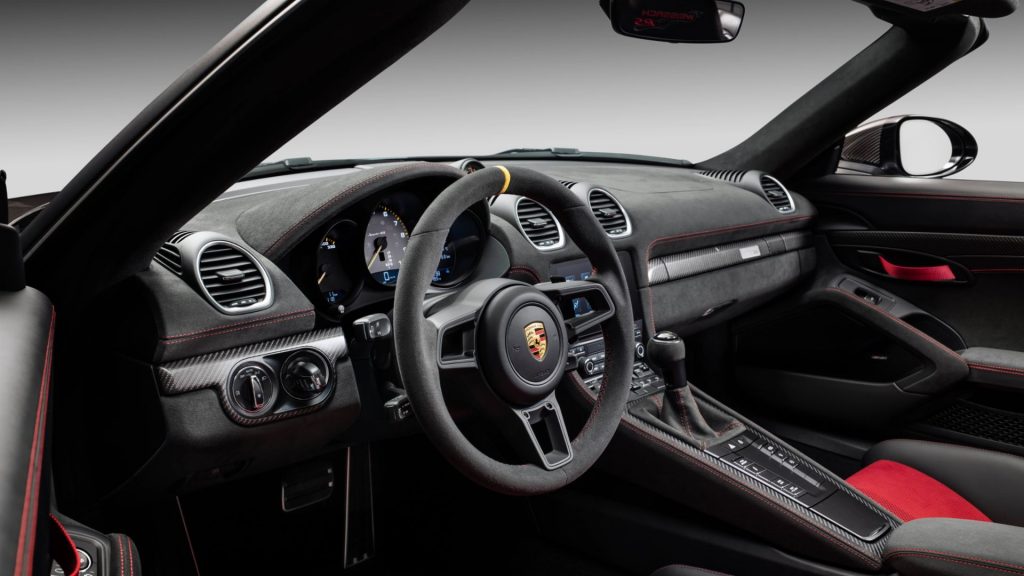
The headrests have the ‘Spyder RS’ badge stitched in the corresponding colours. Leather has been used to cover the trim and dashboard. There are four plain and three metallic exterior paint colours available, as well as the exclusive hues Arctic Grey, Shark Blue, and Ruby Star Neo, as well as the new Vanadium Grey Metallic.
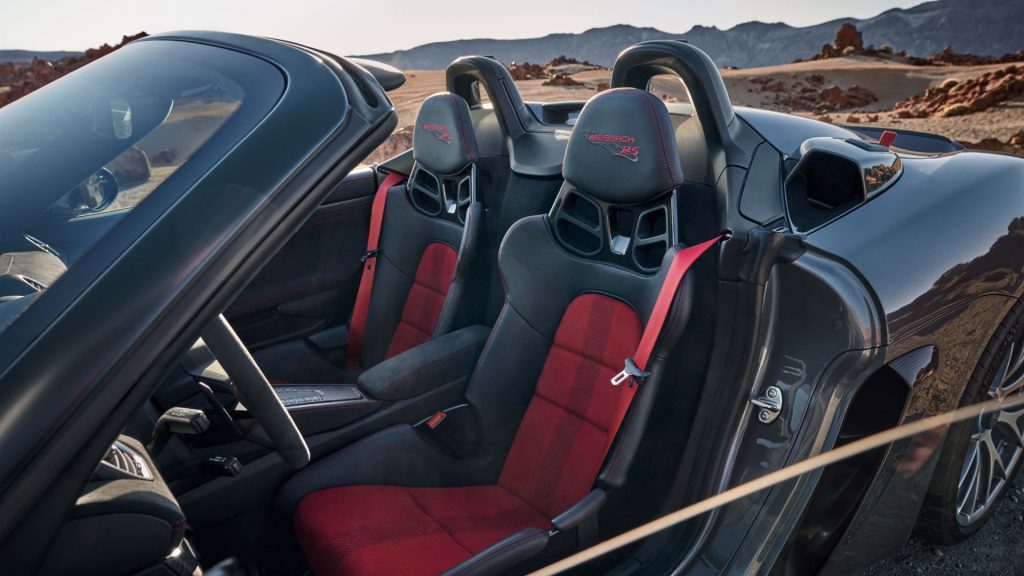
Optional Weissach Package
Additionally offered as an option for the Spyder RS is a Weissach Package. This particularly performance-focused equipment package can be specified along with the incredibly light-weight, optional forged magnesium wheels. Here, the tailpipes for the sports exhaust systems are composed of titanium. The limited-edition 935 from 2018 served the inspiration for the style. Inside the car, the dashboard’s upper portion, which is coated in anti-glare Race-Tex, is a striking aesthetic feature. A Porsche Design Timepieces handcrafted chronograph, made at Porsche’s in-house watchmaking facility in Solothurn, Switzerland, is only accessible to purchasers of the Porsche 718 Spyder RS.
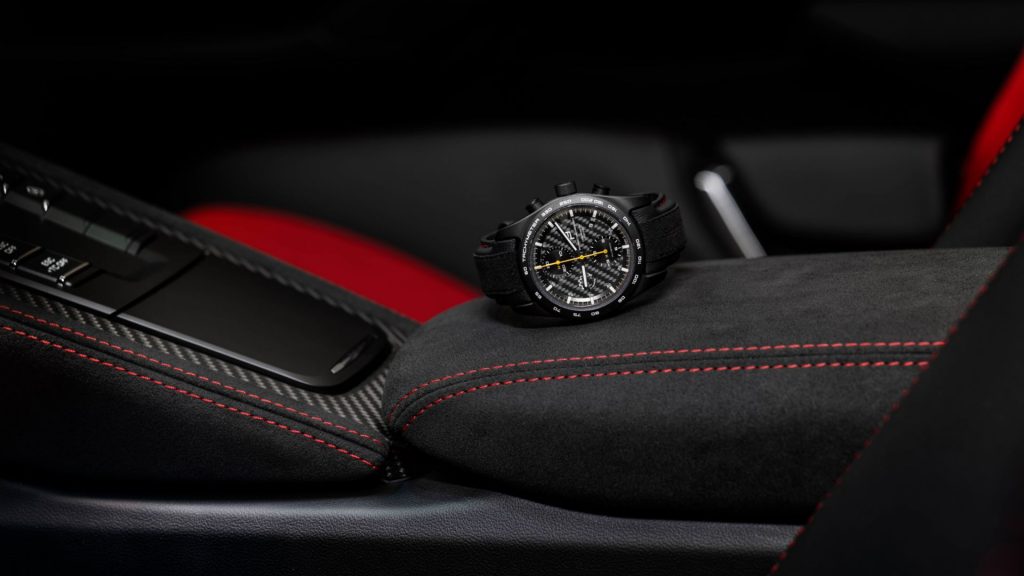
The dial is made of carbon, the strap is made of automobile leather, and the exceptionally lightweight case is made of titanium. These materials were chosen to complement the design of the car. The rear rotor on the 718 Spyder RS is an exact replica of the corresponding wheel rim design.
Price
We are yet to get a local price tag, but the Spyder RS will carry a starting price tag of $162,150 when it begins arriving at American dealerships in Q3 of next year.
